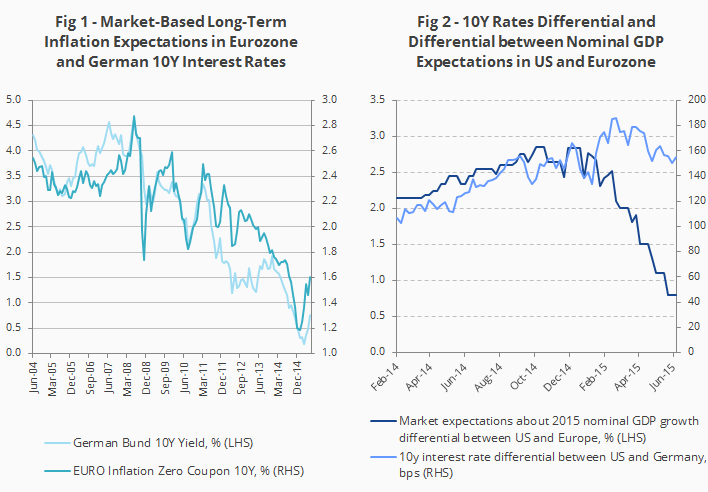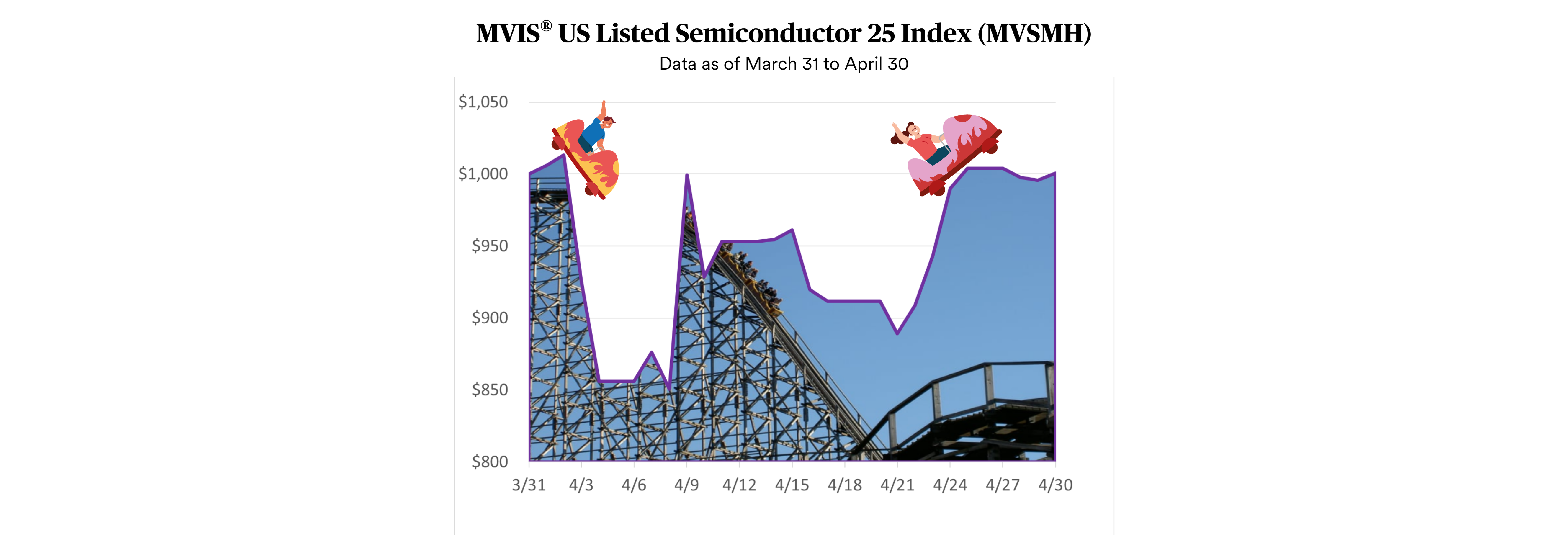German yields have been on a rollercoaster in the past few months polarizing the investment community regarding the outlook for the rest of the year. On the one hand, the ECB’s quantitative easing program is a powerful tool that will anchor German yields for the foreseeable future.
However, anchoring rates at a low level is not tantamount to preventing a gradual upward adjustment, especially if the European QE succeeds in reflating longer-term price expectations (Fig 1). What is important from the US perspective is that the ECB policy anchor can keep the interest rate differential between Europe and the US artificially wide (relative to fundamentals such as relative nominal GDP growth expectations – Fig 2). This can limit the USD downside in the run-up to the Fed’s first policy rate hike despite lower US nominal growth expectations.

Source: Van Eck Research, Bloomberg
Get the latest news & insights from MarketVector
Get the newsletterRelated:
About the Author:
Natalia Gurushina (PhD, Economic History, University of Oxford, 1995; BA, Economics, Moscow State University, 1989) serves as Chief Economist for emerging market managed debt strategies at VanEck. She has more than 15 years of industry experience including responsibilities at Roubini Global Economics, Pantera Capital and Deutsche Bank.
The article above is an opinion of the author and does not necessarily reflect the opinion of MV Index Solutions or its affiliates.




